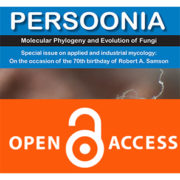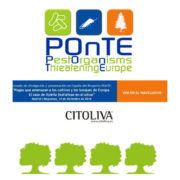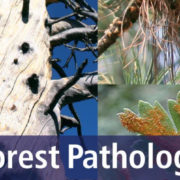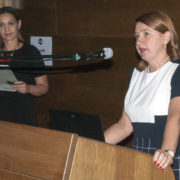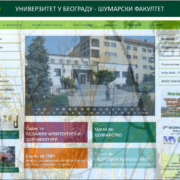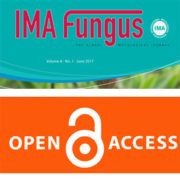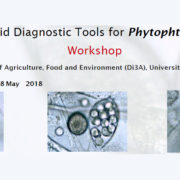Nothophytophthora gen. nov., a new sister genus of Phytophthora from natural and semi-natural ecosystem
T. Jung 1,2,3*, B. Scanu 4, J. Bakonyi 5, D. Seress 5, G.M. Kovács 5,6, A. Durán 7, E. Sanfuentes von Stowasser 8, L. Schena 9, S. Mosca 9, P.Q. Thu 10, C.M. Nguyen 10, S. Fajardo 8, M. González 8, A. Pérez-Sierra 11, H. Rees 11, A. Cravador 2, C. Maia 2, M. Horta Jung 1,2,3
1 Phytophthora Research Centre, Mendel University, 613 00 Brno, Czech 1 Phytophthora Research Centre, Mendel University, 613 00 Brno, Czech Republic. 2 Laboratory of Molecular Biotechnology and Phytopathology, Center for Mediterranean Bioresources and Food, University of Algarve, 8005-130Faro, Portugal. 3 Phytophthora Research and Consultancy, 83131 Nußdorf, Germany. 4 Dipartimento di Agraria, Sezione di Patologia vegetale ed Entomologia, Università degli Studi di Sassari, 07100 Sassari, Italy. 5 Plant Protection Institute, Centre for Agricultural Research, Hungarian Academy of Sciences, 1022 Budapest, Hungary. 6 Department of Plant Anatomy, Institute of Biology, Eötvös Loránd University,1117 Budapest, Hungary. 7 Ontario Forest Research Institute, P6A2E5 Sault Ste. Marie, ON, Canada. 8 Laboratorio de Patología Forestal, Facultad Ciencias Forestales y Centrode Biotecnología, Universidad de Concepción, Concepción, Chile. 9 Dipartimento di Agraria, Università Mediterranea di Reggio Calabria, Località Feo di Vito, 89122 Reggio Calabria, Italy. 10 Forest Protection Research Centre, Vietnamese Academy of Forest Sciences, Duc Thang Ward, Northern Tu Liem District, Hanoi, Vietnam. 11 Forest Research, Alice Holt Lodge, Farnham, Surrey GU10 4LH, UK.
Abstract
During various surveys of Phytophthora diversity in Europe, Chile and Vietnam slow growing oomycete isolates were obtained from rhizosphere soil samples and small streams in natural and planted forest stands. Phylogenetic analyses of sequences from the nuclear ITS, LSU, β-tubulin and HSP90 loci and the mitochondrial cox1 and NADH1 genes revealed they belong to six new species of a new genus, officially described here as Nothophytophthora gen. nov., which clustered as sister group to Phytophthora. Nothophytophthora species share numerous morphological characters with Phytophthora: persistent (all Nothophytophthora spp.) and caducous (N. caduca, N. chlamydospora, N. valdiviana, N. vietnamensis) sporangia with variable shapes, internal differentiation of zoospores and internal, nested and extended (N. caduca, N. chlamydospora) and external (all Nothophytophthora spp.) sporangial proliferation; smooth-walled oogonia with amphigynous (N. amphigynosa) and paragynous (N. amphigynosa, N. intricata, N. vietnamensis) attachment of the antheridia; chlamydospores (N. chlamydospora) and hyphal swellings. Main differing features of the new genus are the presence of a conspicuous, opaque plug inside the sporangiophore close to the base of most mature sporangia in all known Nothophytophthora species and intraspecific co-occurrence of caducity and non-papillate sporangia with internal nested and extended proliferation in several Nothophytophthora species. Comparisons of morphological structures of both genera allow hypotheses about the morphology and ecology of their common ancestor which are discussed. Production of caducous sporangia by N. caduca, N. chlamydospora and N. valdiviana from Valdivian rainforests and N. vietnamensis from a mountain forest in Vietnam suggests a partially aerial lifestyle as adaptation to these humid habitats. Presence of tree dieback in all forests from which Nothophytophthora spp. were recovered and partial sporangial caducity of several Nothophytophthora species indicate a pathogenic rather than a saprophytic lifestyle. Isolation tests from symptomatic plant tissues in these forests and pathogenicity tests are urgently required to clarify the lifestyle of the six Nothophytophthora species.
This work received funding from the European Union’s Horizon 2020 research and innovation programme under grant agreement No. 635646, POnTE (Pest Organisms Threatening Europe).
Published on August 7, 2017 by PERSOONIA

